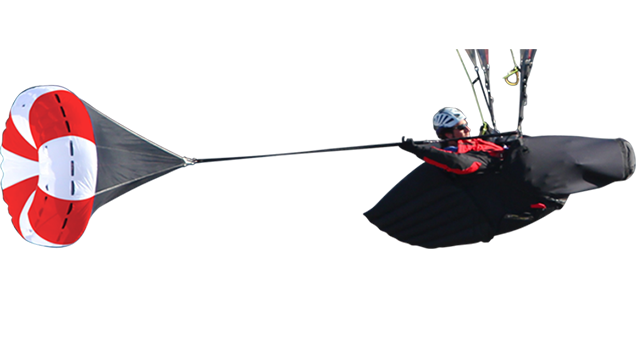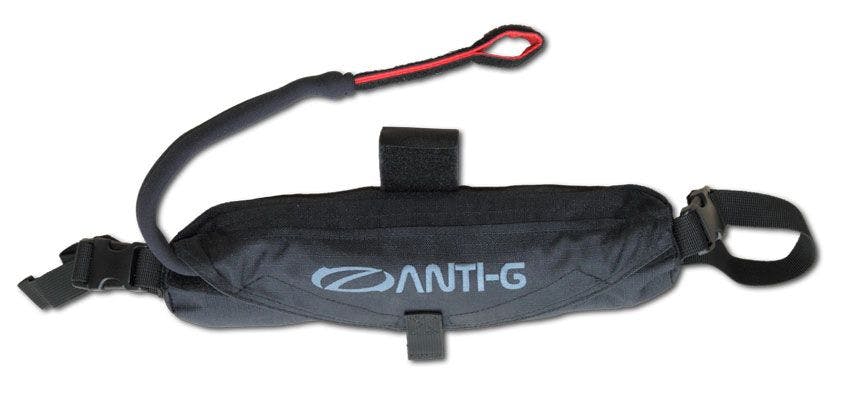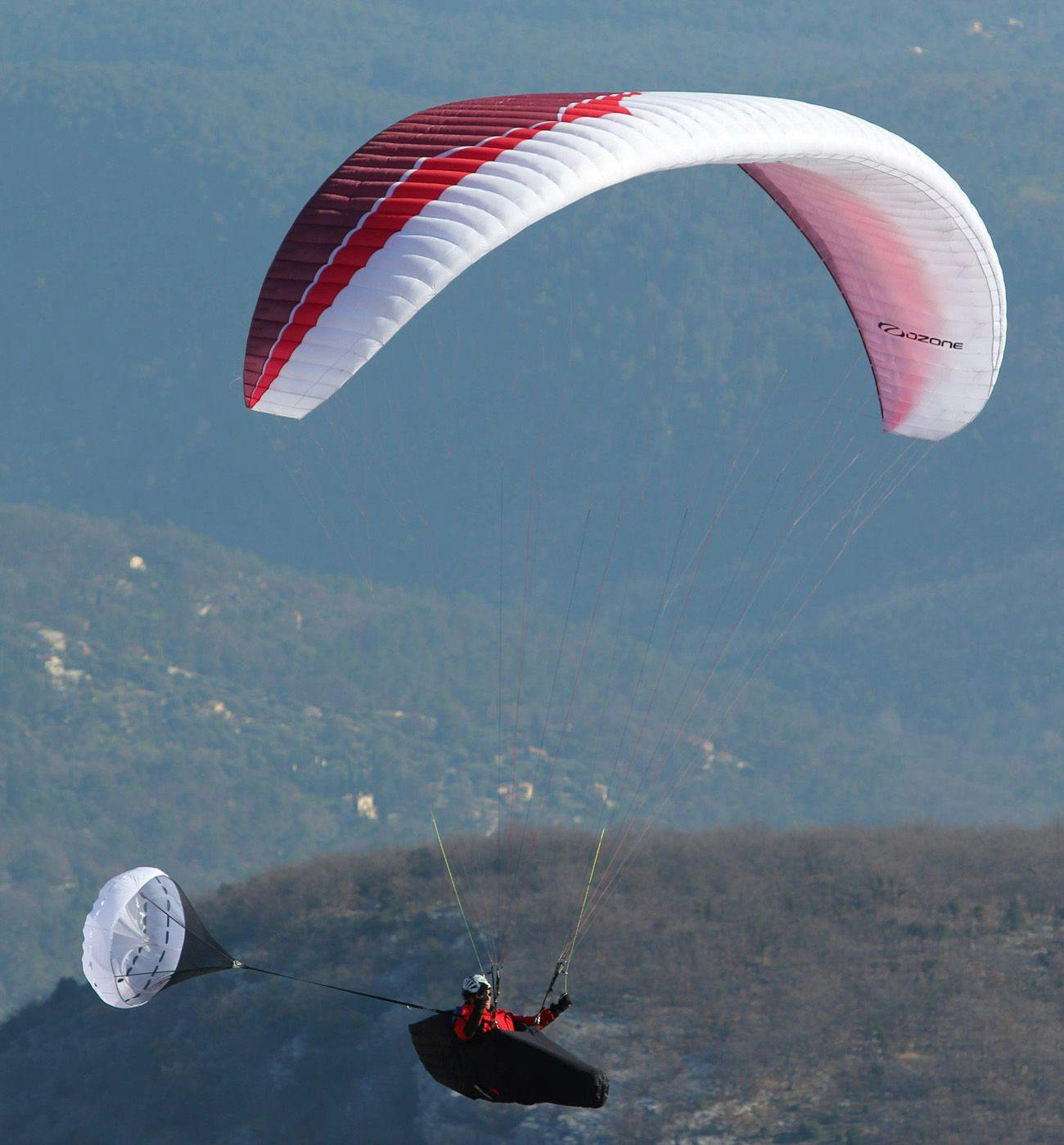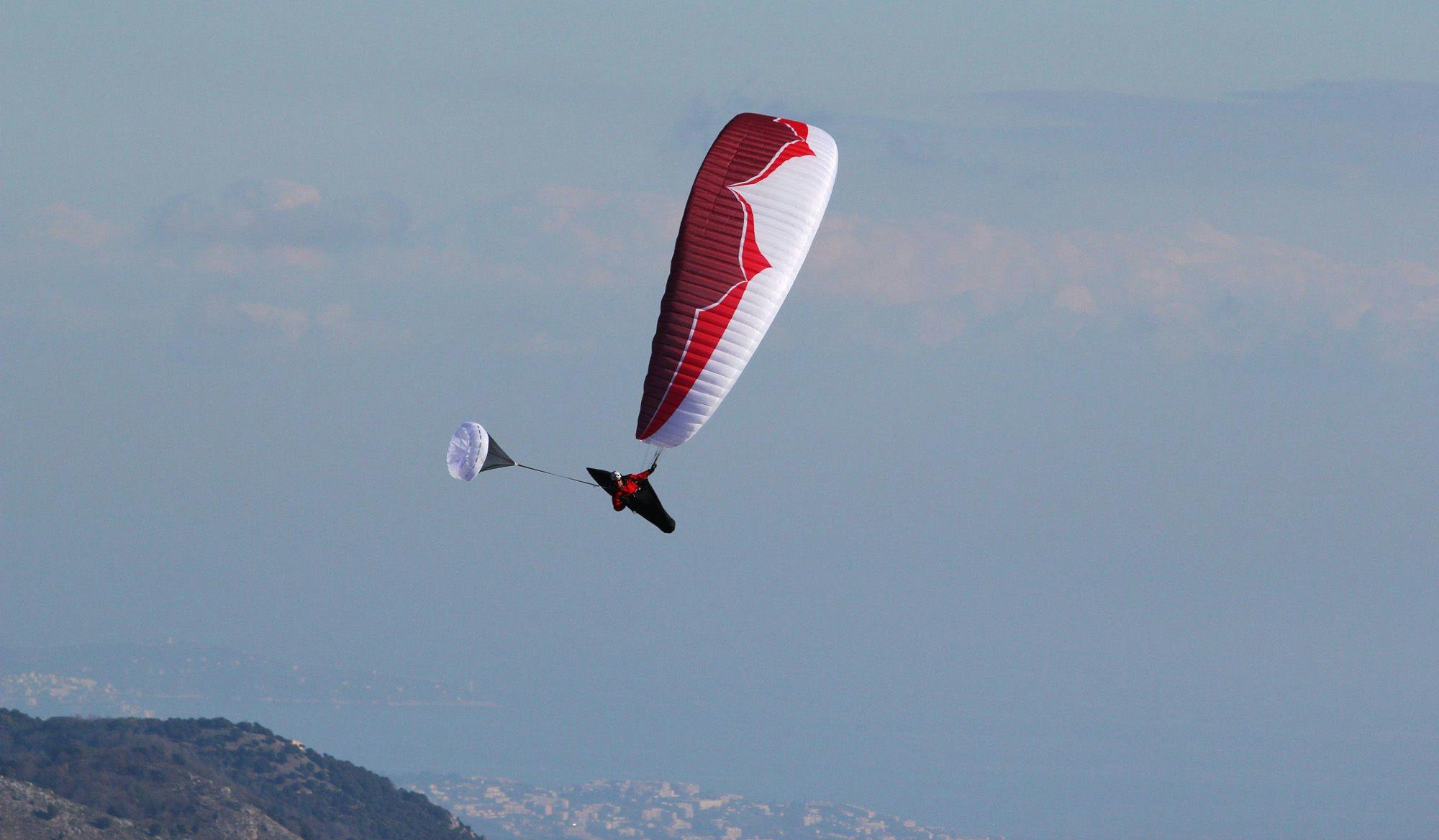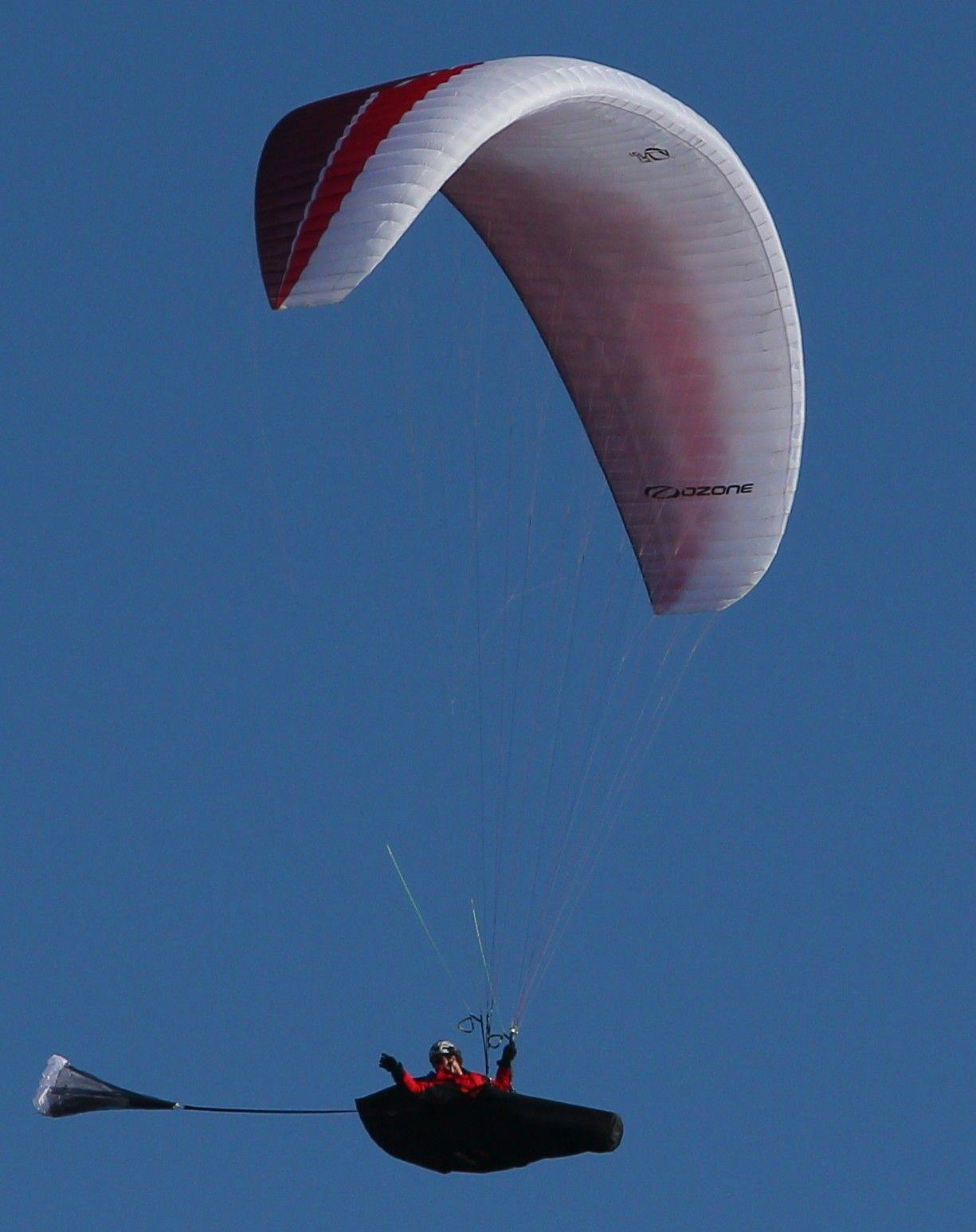
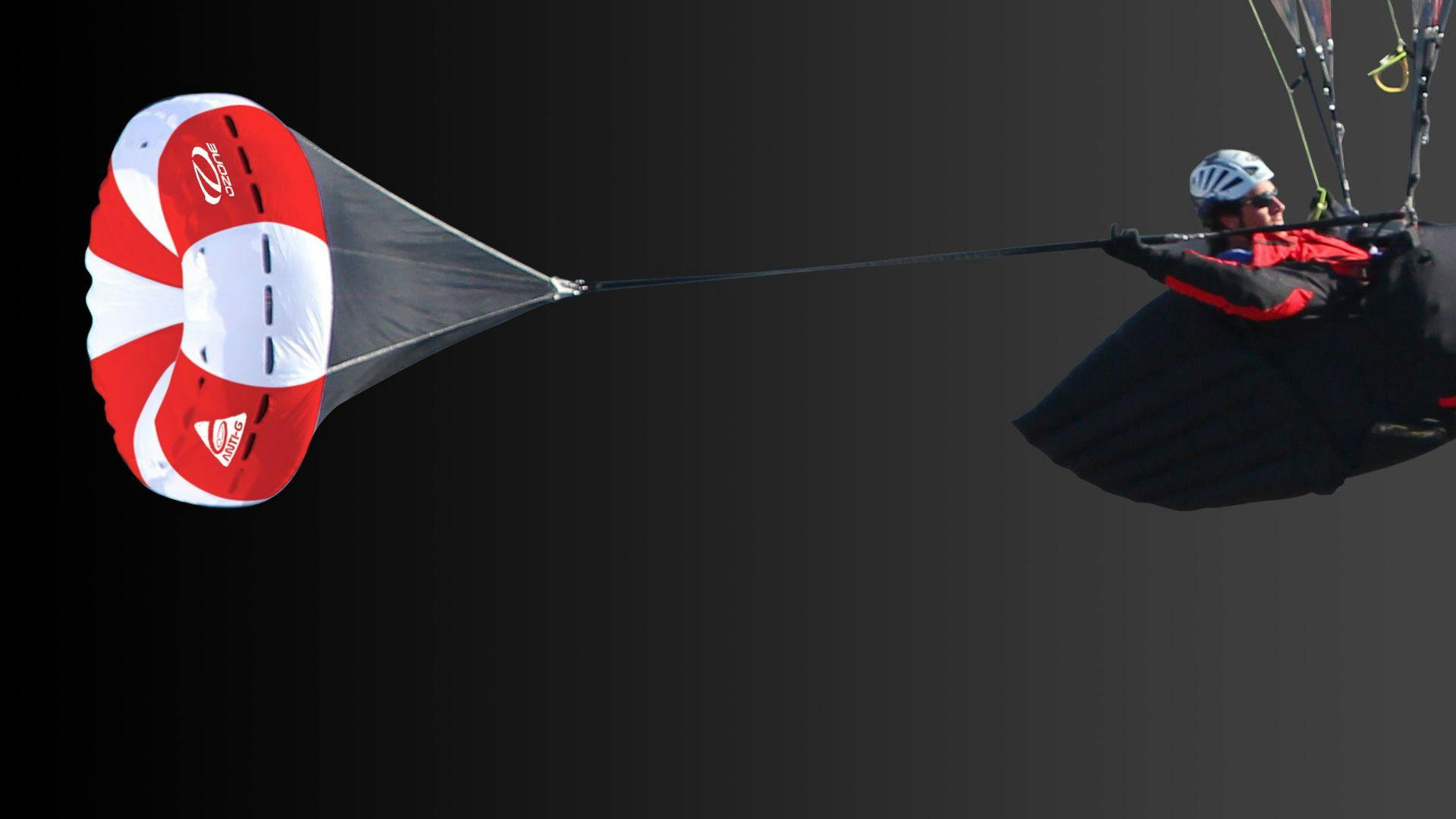
Intended primarily for use by competition pilots and pilots of high aspect ratio wings.
Product Info
혹시, 예전에 깊은 스파이럴 다이브 도중에 정신을 잃었던 적이 있으셨나요? 아니면 아주 깊은 스파이럴은 용기가 나지 않아 엄두조차도 내어보지 못했었나요? 음, 아주 깊은 스파이럴을 해보셨거나, 충분히 해보지 않으셨거나 상관없이, 안티 쥐 (Anti-G)는 여러분들의 비행을 좀더 낳은 방향으로 바꾸어줄 것입니다.
- Intended primarily for use by competition pilots and pilots of high aspect ratio wings
- The Anti-G is simple to use, but must be used only as directed. You must read and understand the user manual prior to use in flight.
- The Anti-G packs into a pouch that is smaller than an average cockpit.It can be used with any harness.
- Lightweight and compact: 620 grams total.
설치가 매우 간편하며, 안티-쥐는 스파이럴 다이브 중에 발생하는 중력의 힘을 감소시키는 역할을 하여 줍니다. 이것은 간단하고 사용하기 편리합니다. 그리고 , 특히 A/R의 비율이 큰 캐노피의 경우에 아주 효과적입니다. 안티-쥐는 여러분이 원하는 스파이럴 방향의 하네스 측면에 부착시킵니다. 모든 파일럿 분들이 안티-쥐를 사용하는 동안에 40% 중력의 힘이 감소되는 경험을 할 것입니다.
안티-쥐는 중력을 감소시키기 때문에, 스파이럴로 인하여 매우 높은 하강 율에 다가가서 보다 큰 위험을 감지했을 때에도 사용할 수 있습니다. 또한, 중력 감소는 캐노피와 라인의 압력을 줄이는 방법이 될 수 있습니다. 안티-쥐와 함께 수준 높은 비행을 할 수 있습니다. 와류도 대수롭지 않게 느끼거나, 하네스 에 부착되어있는 트림 스피드도 좀더 과감하게 사용하여 비행을 할 수 있을 것입니다.* 감속장치를 이용하여 스파이럴 시 부드러운 하강 과 정상적인 착륙을 하실 수 있습니다.
우리는 특히 대회에 참가하는 모든 선수들에게 적극 권해 드립니다. 요즈음의 캐노피들이 (특히 만트라 와 만트라 R 시리즈들)매우 높은 효율성을 가지고 있기 때문입니다. 사실상 스파이럴 다이브 시에 강한 중력은 피할 수 없는 것이며, 제어하기에 어려울 수 있습니다.
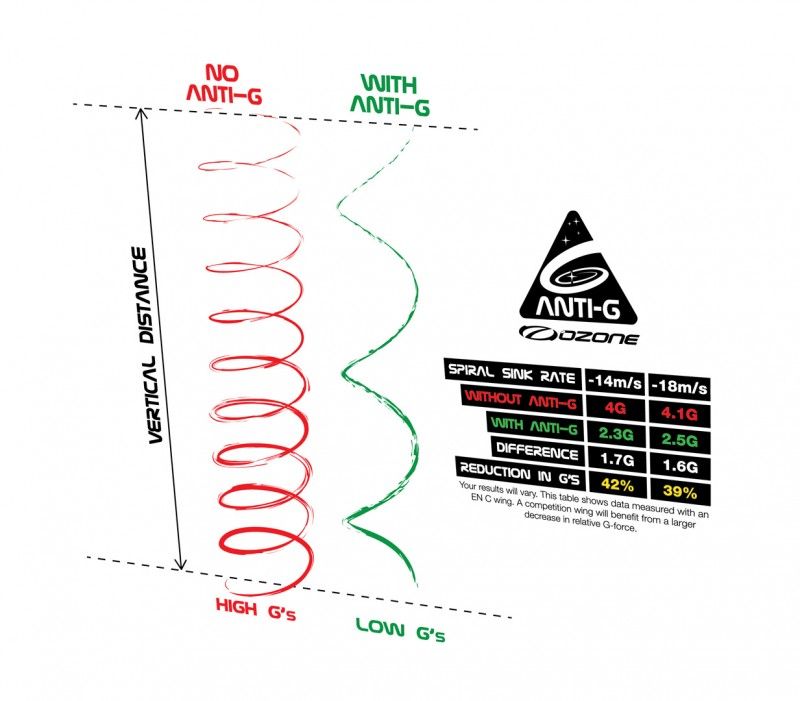
*The Anti-G is not to be used as a tool to land in a shorter than normal distance, it is intended only for use as a tool to decrease G-Force in a spiral.
ANTI-G FREQUENTLY ASKED QUESTIONS
Why is the Anti-G attached asymmetrically (on one side only)?
The Anti-G is attached to only one side so that it can be used with any type of harness. Also, it is designed for use in a spiral which is an asymmetric manouvre to begin with. During the spiral, the Anti-G is attached to the inside riser.
With the Anti-G deployed, is my wing closer to stall, collapse, or spin?
Because the Anti-G is attached to the carabiner, it is very close to the center of gravity of your system (wing + pilot). Therefore, it does not influence the pitch stability of your wing. To prove that point – if the Anti-G were positioned higher, for instance mid-way up your lines, it would exert a rearward force on the glider, giving it a stall tendency.
We could say that the wing doesn’t “feel” your Anti-G, it is only your glide ration which suffers; the Anti-G does not change your pitch equilibrium. The same logic applies while in spiral, and the Anti-G does not cause any spin tendency.
However, the Anti-G does add a very slight yaw asymmetry at trim speed, and a more noticeable asymmetry in accelerated flight.
Does my wing have the same behavior in spiral with the Anti-G?
Yes, all of our testing has shown that a wing’s behavior in spiral (stable or instable) does not change with the Anti-G added.
What about the Anti-G in straight and level flight?
The Anti-G serves no purpose in straight flight. With only 1.2m of surface area, it is too small to create significant drag at trim speed. For instance, it would not help you to land in a shorter distance – for such an application, the Anti-G is far less effective than the appropriate use of your brakes.
During a spiral, the Anti-G’s effectiveness is multiplied by a factor of 10 due to the increase in airspeed and the fact that drag is proportionate to speed. We do not recommend using the Anti-G as a landing approach tool, in addition to it being ineffective, it may also disturb your standard approach patterns.
Can the Anti-G be retracted and re-used in flight?
While it is possible to reuse the Anti-G multiple times during a flight, OZONE does not recommend it. If the pilot retracts the Anti-G in flight, there is a danger of sudden re-inflation in the relative airflow. If the Anti-G re-inflates close to the pilot, it may cause the parachute to obscure the pilot’s view or reduce the pilot’s capability to control his/her wing. We recommend that pilots use the Anti-G for one descent only, then disable it with the kill-line before landing. Each pilot must make his or her own decision as to what is safe and comfortable for them in each situation. You are responsible.
Can the Anti-G benefit the lifespan of my equipment?
Yes, because it greatly reduces the amount of G-Force. The number of Gs is directly proportional to the stress applied to the structure of your wing. Your wing suffers less loading when spiraled with the Anti-G.
What purpose does the shrink tab on the inside of the container serve?
This helps to keep the red stuff sack on the interior of the container in order to prevent it from inflating in the relative wind during flight and disturbing the pilot.
The container is too small!
Your Anti-G spends more time folded in your harness than it does inflated behind you, and for this reason it should take up the least amount of space possible in your harness. The container is designed to receive a properly folded Anti-G. Read the manual, and after one or two practice folds you will realize that it is very easy to put the Anti-G back into its container.
What side do I attach it to?
- The inside of the spiral turn (spiraling left, attach it left side, and vice versa).
- The side opposite to your reserve parachute (in case of the unlikely event that you would need to deploy your reserve while the Anti-G is in use).
My Harness has a “drag chute” attachment point on the shoulder. Should I use that for the Anti-G?
No. We recommend that you attach the Anti-G to your carabiner as shown in the user manual only.
I tried to pull my Anti-G back on board and it re-inflated while I was trying to pull it in!
First of all, we don’t recommend that you do this. If you find yourself in a situation where it is mandatory to retrieve the Anti-G and store it for redeployment, then hold the webbing (bridle) firmly and if necessary kink it a little with your fingers to prevent the apex kill line from sliding inside the webbing.
ATTENTION:
While it is possible to reuse the Anti-G multiple times during a flight, OZONE does not recommend it. If the pilot retracts the Anti-G in flight, there is a danger of sudden re-inflation in the relative airflow. If the Anti-G re-inflates close to the pilot, it may cause the parachute to obscure the pilot’s view or reduce the pilot’s capability to control his/her wing. We recommend that pilots use the Anti-G for one descent only, then disable it with the kill-line before landing.
